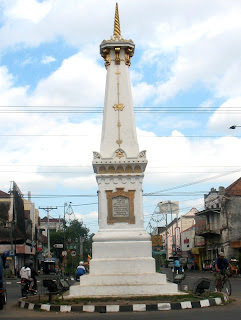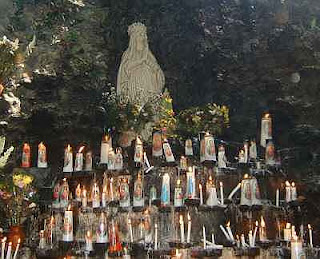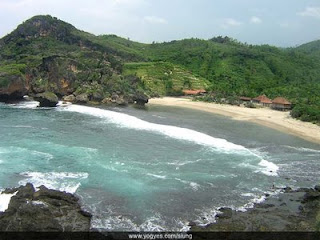 Alun-alun (note: correct orthography hyphenated but occurs occasionally without, also found as aloen-aloen, aloon aloon, and erroneously alon-alon) is a Javanese architectural term for the large central open lawn squares common to villages, towns and cities in Indonesia.
Alun-alun (note: correct orthography hyphenated but occurs occasionally without, also found as aloen-aloen, aloon aloon, and erroneously alon-alon) is a Javanese architectural term for the large central open lawn squares common to villages, towns and cities in Indonesia.Commonly, alun-alun in modern-day Indonesia refers only to the two large open squares of kraton palace compounds.
Each kraton has two alun-alun: the most important and northern alun-alun lor and the less important and commonly smaller southern alun-alun kidul. The court of Pakubuwana in Surakarta is unique as it incorporates the alun-alun kidul within the defensive wall of the kraton proper.
The alun-alun lor also historically functioned for a place for public corporal punishments and executions. Condemned criminals were publicly executed by krissing (using a keris to stab the condemned from the left shoulder blade downward into the heart) beside the enclosed banyan trees of the alun-alun lor. For especially heinous criminals, most especially traitors and vicious brigands the condemned's head would be impaled on a pike as a macabre public warning
The alun-alun lor functioned and continues to function as centre for public spectacles, court celebrations and general non-court entertainment. The Javanese festivals of Garebeganan and Sekaten great fairs were held here, as they are still held today, with the spectacle of huge mountains of rice exiting the kraton for blessings at the mosque and distributed to the people in the alun-alun lor. Occasionally a social and entertainment spectacle of a tiger and buffalo fight wold be held, though from Sultan Hamengkubawana VII onward these were rare, as the Yogyakarta court tigers were incredibly useful for public sanitation as they were fed a diet of stray dogs.
The alun-alun lor was the only place where the Sultan would conduct dialogue with his people, and functioned to show his humanity and humility.
The alun-lun kidul was more of a generic ground, principally for everyday mustering troops or servants and for exiting officials, servants and workers attending to mundane everyday business.
sumber: http://en.wikipedia.org/wiki/Alun-alun














